Many museums, including the Maryhill Museum of Art near Goldendale, Washington, have displays of Mission Baskets. The designation “Mission Baskets” was developed by anthropologist Alfred Kroeber in 1922.
According to the Maryhill Museum display:
“Basketry from most of southern California has traditionally been grouped together under the name Mission. This term was used because the native people of southern California came under the influence of Catholic missionaries at a very early date.”
With regard to the Catholic missions in California, Robert Jackson and Edward Castillo, in their book Indians, Franciscans, and Spanish Colonization: The Impact of the Mission System on California Indians, report:
“The missionaries, assisted by soldiers, congregated Indians into communities organized along the lines of those in the core areas of Spanish America, where Indian converts were to be indoctrinated in Catholicism and taught European-style agriculture, leatherworking, textile production, and other skills deemed useful by the Spaniards.”
By using Indian labor to produce surplus grain supplies for the Spanish military garrisons, the Franciscan missionaries were able to view Indians are both potential converts and labor.
The establishment of the California missions and the enslavement of the Indians to work in these missions resulted in a massive depopulation. In his book The Way We Lived: California Indian Reminiscences, Stories and Songs, Malcolm Margolin writes:
“For the Native Californians the arrival of the Spaniards meant disruption, virtual enslavement, diseases, and death.”
For the Indians who were confined in the missions, public health factors such as poor sanitation and psychological factors such as depression undoubtedly enhanced the high death rate. Women and children had exceptionally high death rates. According to Robert Jackson and Edward Castillo:
“the attempt by the missionaries to wipe out much of native culture may have denied young women access to traditional child-care knowledge.”
Mission life also meant the loss of traditional skills, such as basket weaving.
While it is not uncommon for some textbooks to give the impression that the California Native Americans passively accepted the missions, Spanish domination, and conversion to Christianity, this was not the case. Robert Jackson and Edward Castillo put it this way:
“The initial reception of the Franciscans by the California Indians was anything but hospitable.”
Resistance to the Spanish Franciscans was organized by village chiefs and influential shamans and this resistance was expressed through attacks on both the Spanish soldiers and the Franciscan missionaries. According to Robert Jackson and Edward Castillo:
“The overt hostility of the Indians through much of coastal California during the first years of the Franciscan mission program slowed the rate of the establishment of the new missions and created a reliance on soldiers to protect the Franciscans.”
In 1834, the missions were secularized which meant that many Indian people lost their lands and their homes.
Shown below are some of the Mission Indian baskets on display in the Maryhill Museum of Art.
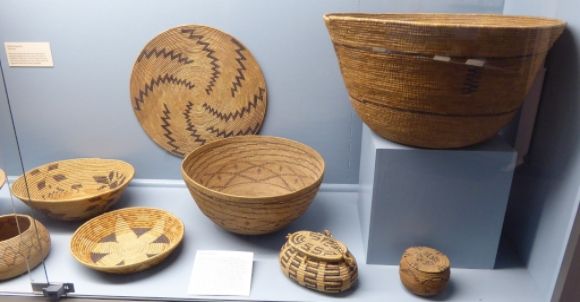
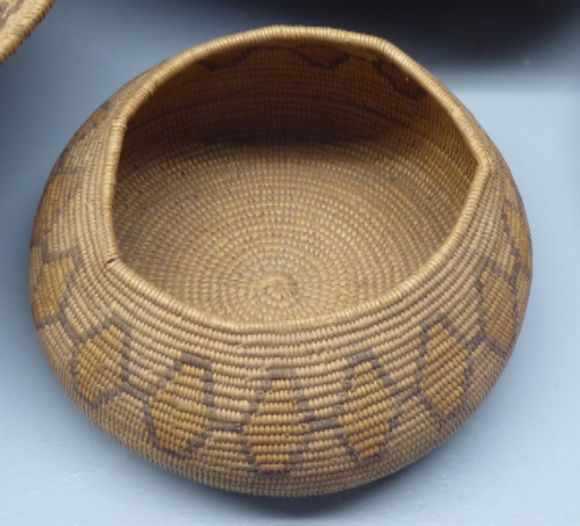
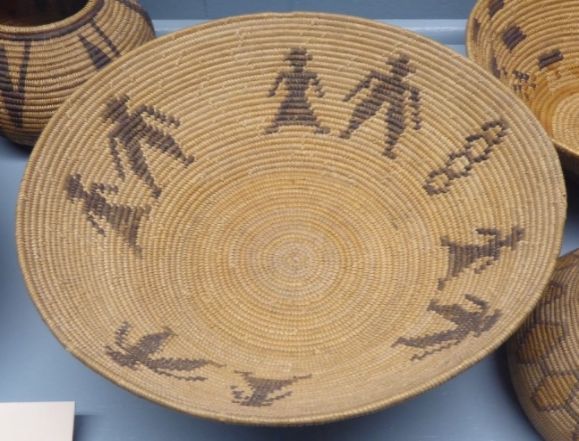
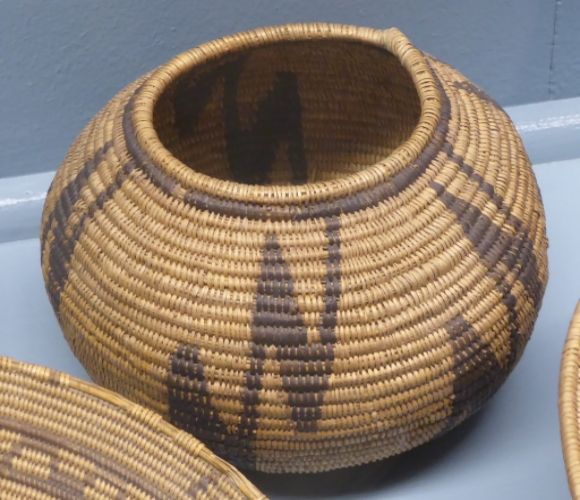
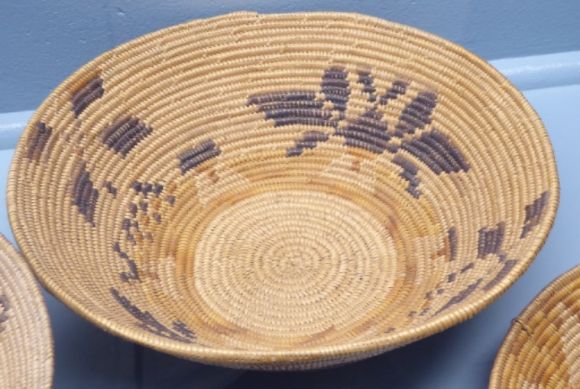
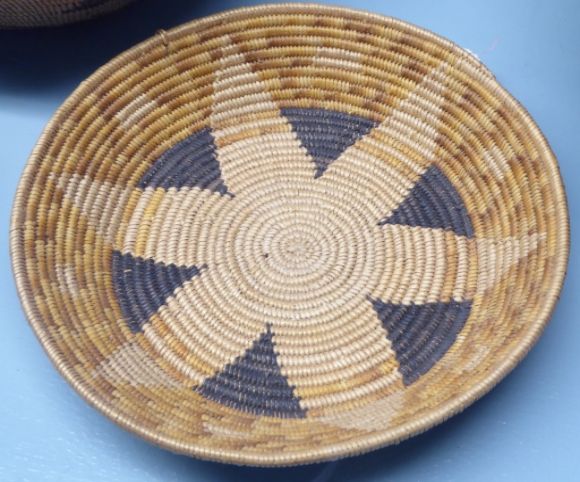

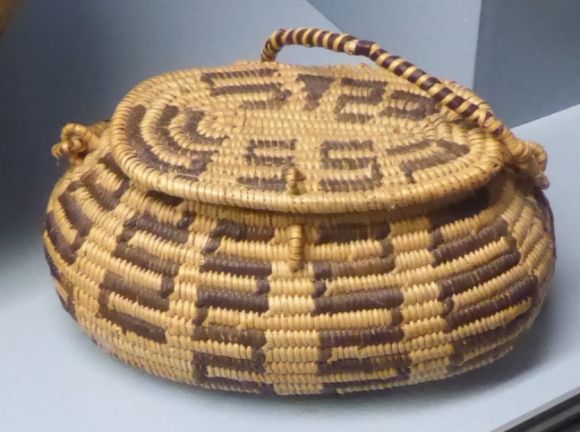
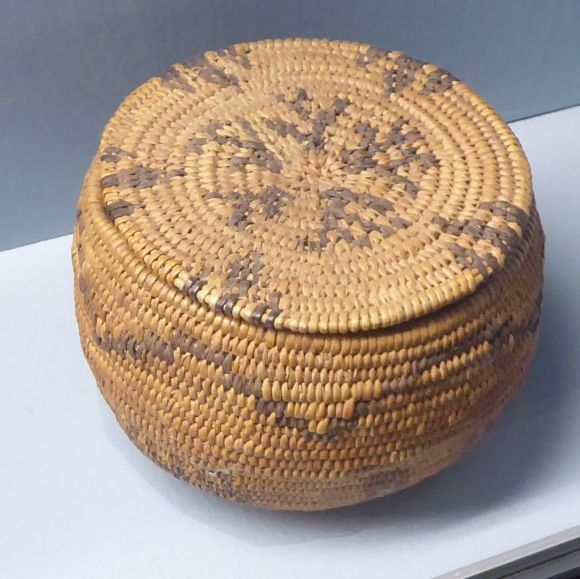
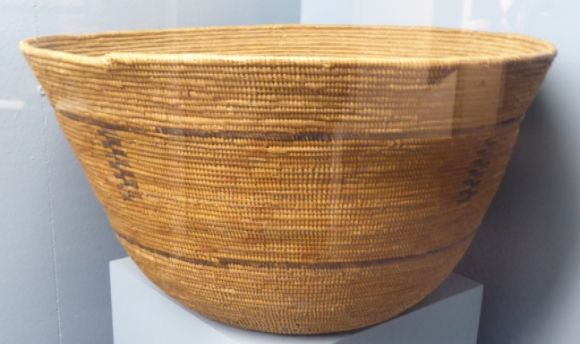
 The entrance to the Maryhill Museum of Art is shown above.
The entrance to the Maryhill Museum of Art is shown above.


